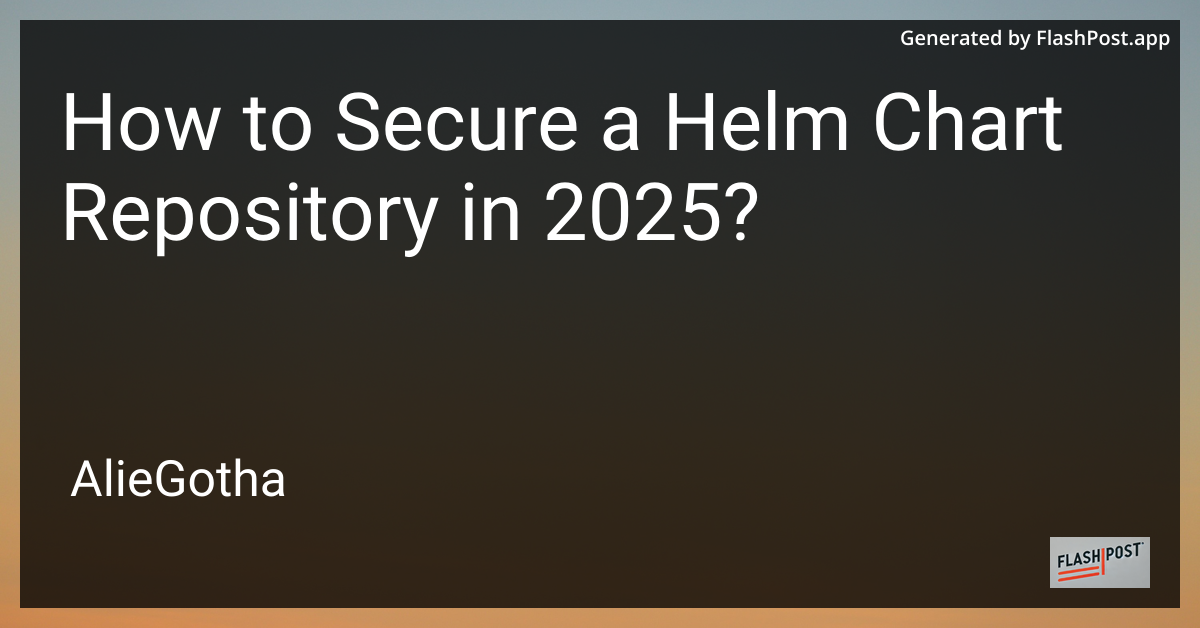

How to Secure a Helm Chart Repository in 2025?
In 2025, securing a Helm chart repository is paramount for ensuring the integrity and safety of Kubernetes applications. With the increasing adoption of cloud-native technologies, the vulnerabilities and risks associated with Helm repositories have also evolved. This guide provides a comprehensive overview of strategies to bolster your Helm chart repository’s security.
Understanding the Importance of Helm Chart Security
As Kubernetes continues to dominate the container orchestration space, Helm charts have become essential for managing complex applications. However, unsecured Helm chart repositories can be a significant source of vulnerabilities, leading to potential exposure of sensitive data and malicious attacks.
Best Practices for Securing a Helm Chart Repository
1. Implement Access Control
Role-Based Access Control (RBAC)
Ensure that you have robust Role-Based Access Control (RBAC) in place to manage who can access, modify, or publish Helm charts. Define roles and permissions clearly to restrict access to necessary personnel only.
2. Use TLS and HTTPS
Transport Layer Security (TLS) and Hypertext Transfer Protocol Secure (HTTPS) are critical for encrypting data in transit. Ensure that all communications with the Helm chart repository use HTTPS to prevent man-in-the-middle attacks.
3. Enable Authentication and Authorization
Implement authentication mechanisms to verify the identity of users before granting access to your Helm chart repository. Utilize OAuth, OpenID Connect, or LDAP for authentication purposes.
4. Regularly Scan and Audit Helm Charts
Regularly scan Helm charts for vulnerabilities using automated tools. Conduct audits to ensure that only approved and secure charts are present in your repository.
5. Version Control
Employ a robust version control system to track changes to Helm charts. This not only helps in keeping track of modifications but also facilitates rollback in case of any issues.
6. Sign and Verify Helm Charts
Utilize cryptographic signatures to sign Helm charts. This ensures the integrity and authenticity of your charts, allowing users to verify that they have not been tampered with.
7. Protect Secrets in Configuration
Avoid hardcoding sensitive information like passwords and API keys in your Helm charts. Instead, use configuration best practices to secure secrets.
8. Monitor and Log Access
Implement logging to monitor access to your Helm chart repository. By keeping a log of all access attempts, you can quickly identify any unauthorized access and take necessary actions.
Advanced Considerations
Helm Functions and Operators
Utilize Helm functions and operators to streamline your Helm chart configurations. Proper use of functions and operators can enhance the functionality and security of your charts.
External Security Audits
Consider conducting external security audits to get an unbiased and detailed analysis of your Helm chart repository’s security posture. This can help identify hidden vulnerabilities that need addressing.
Conclusion
Securing your Helm chart repository is a continuous process that requires vigilance and the implementation of robust security measures. By following the best practices discussed in this guide, you can significantly reduce the risk of security breaches and ensure the safety of your Kubernetes applications.
For more on related topics, check out this interesting article on ski helmet mips, which delves into innovations in helmet safety technologies.
Stay proactive in securing your Helm chart repository, and ensure your applications remain safe and reliable in the ever-evolving tech landscape of 2025.
